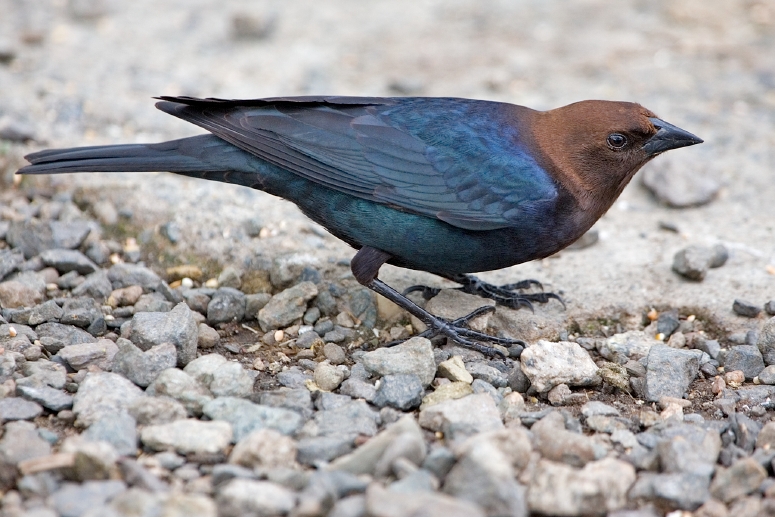Brown-headed Cowbird (Molothrus ater) - Wiki Brown-headed Cowbird
From Wikipedia, the free encyclopedia
[Photo] Male Brown-Headed Cowbird (Molothrus ater), Burnaby Lake Regional Park (Piper Spit), Burnaby, British Columbia. Date June 2006. Author http://www.naturespicsonline.com/ License: public domain
The Brown-headed Cowbird (Molothrus ater) is a small icterid.
Appearance
Adults have a short finch-like bill and dark eyes. The adult male is mainly iridescent black with a brown head. The adult female is grey with a pale throat and fine streaking on the underparts.
Breeding and Behavior
Breeding in open or semi-open country across most of North America, this bird is a brood parasite: it lays its eggs in the nests of other small passerines (perching birds), particularly those that build cup-like nests, such as the Yellow Warbler. The young cowbird is fed by the host parents at the expense of their own young.
Brown-headed Cowbirds are permanent residents in the southern parts of their range; northern birds migrate to the southern United States and Mexico. They often travel in flocks, sometimes mixed with Red-winged Blackbirds or European Starlings.
These birds forage on the ground, often following grazing animals such as horses and cows to catch insects stirred up by the larger animals. They mainly eat seeds and insects.
At one time, the Brown-headed Cowbird followed the bison herds across the prairies. Their parasitic nesting behaviour complemented this nomadic lifestyle. Their numbers expanded with the clearing of forested areas and the introduction of new grazing animals by settlers across North America. Brown-headed Cowbirds are now commonly seen at suburban birdfeeders.
"Mafia Behavior"
Brown-headed Cowbird females can lay 36 eggs in a season. Over 140 different species of birds are known to have raised young cowbirds. Host parents may sometimes notice the cowbird egg. Different species react in different ways. Gray Catbirds destroy the egg by pecking it. Some species may simply build a new layer over the bottom of the original nest. Brown-headed cowbird nestlings are sometimes expelled from the nest. This rejection, however, may trigger a "mafia" reaction, according to a study by the Florida Museum of Natural History. When the parasitic egg was removed from the host nest, the cowbird returned to ransack the nest about 56% of the time. In addition, the cowbird also destroyed nests in a type of "farming behavior" to force the hosts to build new ones. The cowbirds then laid their eggs in the new nests 85% of the time.
http://en.wikipedia.org/wiki/Brown-headed_Cowbird
| The text in this page is based on the copyrighted Wikipedia article shown in above URL. It is used under the GNU Free Documentation License. You may redistribute it, verbatim or modified, providing that you comply with the terms of the GFDL. |
